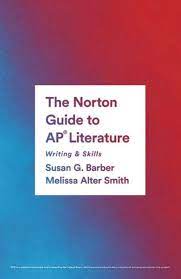This year, I found myself on the sample selection team for the digital FRQ3, and while no responses (to my knowledge) referenced Sheryl Crow’s hit, the vast majority of students found this prompt about reinvention very accessible:
In many works of literature, characters choose to reinvent themselves for significant reasons. They may wish to separate from a previous identity, gain access to a different community, disguise themselves from hostile forces, or express a more authentic sense of self.
Either from your own reading or from the following list, choose a work of fiction in which a character intentionally creates a new identity. Then, in a well-written essay, analyze how the character’s reinvention contributes to an interpretation of the work as a whole. Do not merely summarize the plot.
Our sample selection team marveled at the diverse range of titles chosen, recognizing that while the classical canon is alive and well (hello, Shakespeare, Fitzgerald and Chopin), contemporary authors were extremely popular this year (welcome Celeste Ng, Tommy Orange, and Colson Whitehead).
So many selections!
What Students Did Well
Thesis
I’d estimate over 90% of students earned the thesis point on this prompt, with many of them providing an overarching claim as a starting point for a solid line of reasoning. While most appeared in the introduction, readers were cognizant of a thesis appearing across multiple sentences at any point within the essay, or statements that offered an implied reinvention.
Evidence and Commentary
According to the global free-response score report, students scored slightly lower in Row B on this response than FRQ 1 and 2. Responses that earned 3 or 4 points in this section tended to get to the point quickly and maintained a line of reasoning. Those essays typically provided a logical sequence of claims that worked together to defend the overarching thesis statement while providing commentary that explained the relationship between the thesis and claims. If that kind of analysis is present, the essay will earn at least 3 points in Row B. To earn 4, the evidence and commentary must be present throughout the body of the response. Years ago, a wise Table Leader suggested that the difference between good and great analysis is the difference between “I can see why you might think that” and “I can see how you think that.” This year, our wise Question Leader reminded us that “good essays make you think, and great essays change how you think.”
Sophistication
That difference between “good” and “great” is often the key factor in earning the sophistication point. Row C remains the toughest point to earn, but we saw plenty of evidence that students are improving in this area. For this prompt, students who offered interpretations in a broader context or accounted for alternative interpretations of the text often earned the sophistication point. The key here is to incorporate those ideas throughout the essay, not just in a single paragraph or a standout sentence. For instance, an essay on how Billy Pilgrim’s becoming “unstuck in time” in Slaughterhouse Five was a means of coping with PTSD illustrated the intentional change in a broader context. A Great Gatsby essay focusing on Myrtle instead of Jay offered an insightful, alternative interpretation of the novel’s take on the American Dream.
Where Students Can Improve
Thesis
Again, the vast majority of students earned the thesis point. But, as Brian Hannon mentioned in his post, earning the point didn’t always mean the thesis made a connection between the character’s reinvention and an interpretation of the work as a whole. Sometimes, students chose characters that did not make an intentional change, but rather changed due to the outside forces. The best thesis statements paved the way for a thorough discussion of the intentional change while providing some indication of not just a thematic topic, but what the author said or suggested about it.
Evidence and Commentary
Going beyond plot summary or, in the case of well-known titles (I’m looking at you, Gatsby), referencing the same few plot points, is critical to earning 3 or 4 points in Row B. Instead of tackling the entire novel, essays that focused on specific episodes related to a character’s reinvention were more likely to offer a focused, cohesive argument. (See Brian’s 8 Things to Know for the AP Literature Exam for a great example on how to use episodes.)
Teaching Points – Suggestions for the Classroom
Based on what I observed at the reading, I plan to do more of the following with my students this year:
- Depth over breadth will be my mantra! (Thanks, Susan!) Each year, I attempt to take my classes through five major works; the students read another two independently. This year, I’m going to use just a few all-class reading assignments as a springboard for independent reading. We’ll examine the Big Ideas and Enduring Understandings as a class, then apply our knowledge in small groups or individually.
- Much more character analysis! And not just the protagonist! One tip I suggest to my students is to think about which characters are most likely to be mentioned in an essay about what we’re reading, then develop an argument for a secondary character. Is everyone likely to write about Lear, Gatsby, or Offred? If so, think about how a response featuring Edgar, Myrtle, or Serena Joy might stand out in a positive way.
- Context is key! Whether it’s historical or contemporary, students need to understand the connections between what they read and the world around them.
- Meet them where they are, then nudge them toward where they need to be. YA titles can be successful on FRQ3, but students are more likely to develop complex ideas with more-complex literature. If students prefer Angie Thomas, Jason Reynolds, or Gary Paulson, that’s fine, but I need to help them move from those works to ones more likely to be presented at the collegiate level.
Reading your students’ responses this summer was an absolute joy. It’s a privilege to sit down with so many dedicated college and high school educators and revel in what students are able to communicate in such a short amount of time.
Jeff Larsen is about to begin his 30th year of teaching (25th teaching AP Literature) at Lowell High School in Lowell, Michigan. He’s also an Adjunct Professor at Grand Rapids Community College.












